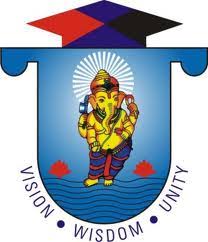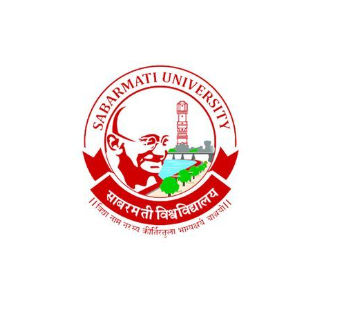Fractional Knapsack Problem: Greedy algorithm with Example - Shikshaglobe

What is a Greedy Strategy?
Eager calculations resemble dynamic programming calculations that are frequently used to take care of ideal issues (track down the best arrangements of the issue as per a specific standard).
Ravenous calculations carry out ideal nearby choices with the expectation that those determinations will prompt an ideal worldwide answer for the issue to be tackled. Insatiable calculations are frequently not too difficult to even consider setting up, quickly (time intricacy is in many cases a direct capability or especially a second-request capability). Furthermore, these projects are not hard to investigate and utilize less memory. Be that as it may, the outcomes are not generally an ideal arrangement.
Insatiable procedures are frequently used to tackle the combinatorial enhancement issue by building a choice A. Choice An is developed by choosing every part Ai of An until complete (enough n parts). For every Ai, you pick Ai ideally. Along these lines, it is conceivable that at the last step, you have nothing to choose except acknowledging the final worth.
Read More: UML Activity Diagram: What is, Components, Symbol, EXAMPLE
There are two basic parts of voracious choices:
Method of ravenous choice. You can choose which arrangement is best as of now and afterward settle the subproblem emerging from making the last determination. The choice of voracious calculations might rely upon past determinations. However, it can't rely upon any future choice or contingent upon the arrangements of subproblems. The calculation develops such that makes choices in a circle, simultaneously contracting the given issue to more modest subproblems.
Ideal base. You play out the ideal base for an issue on the off chance that the ideal arrangement of this issue contains ideal answers for its subproblems.
A voracious calculation has five parts:
A bunch of competitors, from which to make arrangements.
A determination capability, to choose the best possibility to add to the arrangement.
A plausible capability is utilized to choose if a competitor can be utilized to construct an answer.
A goal capability, fixing the worth of an answer, or an inadequate arrangement.
An assessment capability is demonstrated when you track down a total arrangement.
The Idea of Greedy One
With the main thought, you have the accompanying strides of Greedy One:
Sort in the non-expanding requests of values.
Thusly consider the arranged bundles, put the thinking about bundle into backpack assuming the excess limit of the rucksack is sufficient to contain it (and that implies that the complete load of the bundles that have been placed into the rucksack and weight of considering bundles doesn't surpass the limit of the backpack).
Be that as it may, this ravenous calculation doesn't necessarily in all cases give the ideal arrangement. Here you have a counter-model:
The boundaries of the issue are: n = 3; M = 19.
The bundles: {i = 1; W[i] = 14; V[i] = 20}; {i = 2; W[i] = 6; V[i] = 16}; {i = 3; W[i] = 10; V[i] = 8} - > Great worth yet in addition extraordinary weight.
The calculation will choose bundle 1 with a complete worth of 20, while the ideal arrangement of the issue is chosen (bundle 2, bundle 3) with an all-out worth of 24.
The Idea of Greedy Two
With the subsequent thought, you have the accompanying strides of Greedy Two:
Sort in the non-diminishing requests of loads.
Thus consider the arranged bundles, put the thinking about bundle into backpack assuming the excess limit of the rucksack is sufficient to contain it (and that implies that the complete load of the bundles that have been placed into the backpack and weight of considering bundles doesn't surpass the limit of the backpack).
Steps of Algorithm
You see this is an issue of tracking down max. The rundown of bundles is arranged in plummeting requests of unit expenses to think about fanning.
Continue Reading: State Machine Diagram: UML Tutorial with EXAMPLE
Stage 1: Node root addresses the underlying condition of the rucksack, where you have not chosen any bundle.
Total Value = 0.
The upper bound of the root hub Upper Bound = M * Maximum unit cost.
Stage 2: Node root will have youngster hubs compared to the capacity to choose the bundle with the biggest unit cost. For every hub, you re-work out the boundaries:
Total Value = Total Value (old) + number of chosen bundles * worth of each bundle.
M = M (old) - number of bundles chosen * weight of each bundle.
Upper Bound = Total Value + M (new) * The unit cost of the package to be viewed straightaway.
Stage 3: In kid hubs, you will focus on spreading for the hub having the bigger upper bound. The offspring of this hub compare to the capacity of choosing the following bundle has a huge unit cost. For every hub, you should re-work out the boundaries Total Value, M, and Upper Bound as per the equation referenced in sync 2.
Stage 4: Repeat Step 3 with the note: for hubs with an upper bound is lower or equivalent qualities to the transitory most extreme expense of a choice found, you don't have to branch for that hub any longer.
Stage 5: If all hubs are diverged or cut, the most costly choice is the one to search for.
The intricacy of the calculation:
In the event that utilizing a straightforward sort calculation (choice, bubble… ) the intricacy of the entire issue is O(n2).
On the off chance that utilizing speedy sort or union sort, the intricacy of the entire issue is O(nlogn).
Java code for Greedy Three
You, first and foremost, characterize the class Knapsack Package. This class has properties: weight, esteem, and relating the cost of each bundle. The property cost of this class is utilized for arranging tasks in the principal calculation.
Keep reading
Break down the principal model:
The boundaries of the issue are: n = 4; M = 37.
The bundles: {i = 1; W[i] = 15; V[i] = 30; Cost = 2.0}; {i = 2; W[i] = 10; V[i] = 25; Cost = 2.5}; {i = 3; W[i] = 2; V[i] = 4; Cost = 1.0}; {i = 4; W[i] = 4; V[i] = 6; Cost = 1.5}.
You sort bundles in the request for no expansion of the worth of unit costs. You have: {i = 2} - > {i = 1} - > {i = 4} - > {i = 3}.
Ventures for applying calculation for the principal model:
Characterize x1, x2, x3, x4 is the quantity of each chosen bundle, relating to bundle {i = 2} - > {i = 1} - > {i = 4} - > {i = 3}.
Hub root N addresses the expression that you have not chosen any bundle. Then:
Total Value = 0.
Click here to learn more |
M = 37 (as proposed).
Upper Bound = 37 * 2.5 = 92.5, of which 37 is M and 2.5 is the unit cost of bundle {i = 2}.
With bundle {i = 2}, you have 4 prospects: select 3 bundle {i = 2} (x1 = 3); select 2 bundle {i = 2} (x1 = 2); select 1 bundle {i = 2} (x1 = 1) and not select bundle {i = 2} (x1 = 0). As per these 4 prospects, you branch the root hub N to 4 kids N[1], N[2], N[3] and N[4].
For kid hub N1, you have:
Total Value = 0 + 3 * 25 = 75, where 3 is the quantity of bundle {i = 2} chose and 25 is the worth of each bundle {i = 2}.
M = 37 - 3 * 10 = 7, where 37 is the underlying amount of the rucksack, 3 is the quantity of bundle {i = 2}, 10 is the heaviness of each bundle {i = 2}.
Upper Bound = 75 + 7 * 2 = 89, where 75 is Total Value, 7 is the leftover load of the rucksack and 2 is the unit cost of the bundle {i = 1}.
Essentially, you can ascertain the boundaries for hubs N[2], N[3] and N[4], wherein the Upper Bound is 84, 79 and 74 separately.
Among hubs N[1], N[2], N[3] and N[4], hub N[1] has the biggest Upper Bound, so you will branch hub N[1] first with the expectation that there will be a decent arrangement from this course.
From hub N[1], you have just a single kid hub N[1-1] relating to x2 = 0 (because of the excess load of the knapsack is 7, while the heaviness of each bundle {i = 1} is 15). In the wake of deciding the boundaries for the N[1-1] button you have the Upper Bound of N[1-1] is 85.5.
You keep stretching hub N[1-1]. Hub N[1-1] has 2 youngsters N[1-1-1] and N[1-1-2] comparing to x3 = 1 and x3 = 0. Subsequent to deciding the boundaries for these two hubs, you see that the Upper Boundary of N[1-1-1] is 84 and that of N[1-1-2] is 82, so you keep expanding hub N[1-1-1].
Hub N[1-1-1] has two kids, N[1-1-1-1] and N[1-1-1-2], relating to x4 = 1 and x4 = 0. These are two leaf hubs (addressing the choice) on the grounds that for every hub the quantity of bundles has been chosen. In which hub N[1-1-1-1] addresses the choice x1 = 3, x2 = 0, x3 = 1 and x4 = 1 for 83, while hub N[1-1-1-2] addresses the choice x1 = 3, x2 = 0, x3 = 1 and x4 = 01 at 81. So the brief greatest worth here is 83.
Turning around to hub N[1-1-2], you see that the Upper Bound of N[1-1-2] is 82 < 83, so you trim hub N[1-1-2].
Turning around to hub N2, you see that the Upper Bound of N2 is 84 > 83, so you keep spreading hub N2. The hub N2 has two youngsters N[2-1] and N[2-2] comparing to x2 = 1 and x2 = 0. Subsequent to working out the boundaries for N[2-1] and N[2-2], you see the Upper Bound of N[2-1] is 83 and that of N[2-2] is 75.25. Neither of these qualities is more prominent than 83 so the two hubs are managed.
Click here for details |
At long last, hubs N3 and N4 are additionally managed.
So every one of the hubs on the tree are extended or managed so the best impermanent arrangement is the one to search for. Appropriately, you really want to choose 3 bundles {i = 2}, 1 bundle {i = 4} and one bundle {i = 3} with complete worth of 83, absolute weight is 36.
Get started today











